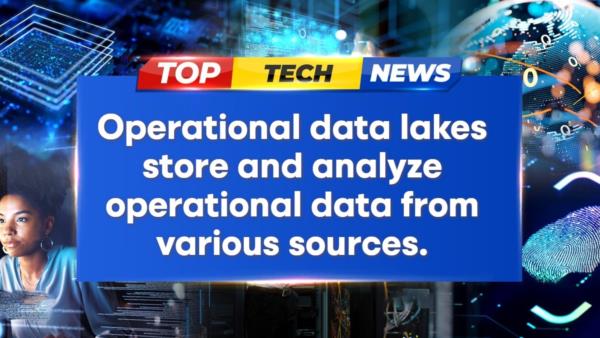
In the fast-paced world of technology, reducing technical debt and minimizing manual work are major goals for many IT teams in 2024. As businesses navigate the ever-changing landscape of data management and artificial intelligence (AI), one valuable tool they are increasingly turning to is the operational data lake. This centralized repository plays a crucial role in storing and leveraging operational data efficiently, making it a key component in fueling successful AI strategies.
Operational data lakes serve as a storage and analysis hub for various types of data derived from different sources such as software, cloud environments, and machine-generated data. They particularly focus on operational data, which is vital for IT, security, and cybersecurity domains. Unlike business intelligence data that relates to analytics, marketing, and inventory, operational data provides insights into the performance, reliability, and availability of the enterprise's software infrastructure.
One of the unique features of operational data is its transient and ephemeral nature. It consists of short-lived data points that often need to be captured and stored in dedicated solutions. For example, monitoring the fluctuating temperatures of a machine or tracking CPU utilization requires the storage of multiple point-in-time snapshots. An operational data lake acts as a reservoir for these fleeting insights, offering historical context and enabling organizations to make informed decisions based on past trends and performance metrics.
When it comes to AI, the quality of the data it relies on determines its effectiveness. Just as humans need contextualized information to draw accurate conclusions, AI systems require vast amounts of contextualized data. Without the right context, AI may draw incorrect conclusions. For example, a generative AI system without proper context might mistakenly conclude that a table is an animal, as it lacks the additional context that identifies a table as a piece of furniture. The more contextualized data supplied to AI systems, the better their ability to provide accurate predictions, analytics, and deductions.
Operational data lakes offer the capacity to house massive amounts of contextualized data essential for AI systems. Their role in AI is crucial as they provide a holistic view of the enterprise and ensure that AI models have access to the necessary data for precise analytics and forecasts. This contextual richness is the key to accurate AI outcomes.
It's important to note that AI tools, like ChatGPT, require significant amounts of energy to function properly. Similarly, they require massive amounts of data to make informed business decisions and ensure optimal performance of the infrastructure. Operational data lakes act as the backbone for providing this data, supporting AI initiatives by delivering large volumes of contextualized information.
Generative AI can also simplify complex operational data by adding context. By using AI to look at indexed databases and ask questions, understanding cryptic operational data becomes more manageable. Whether translating acronyms or offering real-time explanations of keywords, generative AI enhances data accessibility and actionability.
Furthermore, operational data lakes contribute to anomaly detection. With access to contextualized data, AI systems can identify patterns that deviate from the norm. For instance, if an enterprise typically has 100 users logging into its systems daily, but suddenly notices 500 logins one morning, this anomaly could indicate a potential security threat. Properly trained AI systems can detect such anomalies and raise alerts, demonstrating the importance of incorporating operational data lakes into AI strategies.
Innovation is a vital aspect of business survival and growth. Failing to adapt to evolving technologies and trends can hinder a company's ability to compete in today's rapidly changing landscape. Embracing operational data lakes and recognizing their significance in AI strategies is imperative for organizations striving to stay ahead.
In 2024, prioritize and strengthen your AI strategies by choosing solutions that are adaptable, high-performing, and seamlessly integrable. Look for solutions that simplify data storage, offer open data formats, and allow for complete ownership of stored data. By utilizing these characteristics, organizations can not only achieve convenience but also profitability. Find a solution that works for your specific needs and goals.
By centralizing data and standardizing structures, operational data lakes eliminate data silos, reduce ad hoc automation, and streamline processes. This leads to a significant decrease in toil and technical debt, freeing up resources for more strategic initiatives. Make 2024 the year you leverage the power of operational data lakes to drive your AI initiatives towards success.
Remember, Forbes Technology Council is an exclusive community for world-class CIOs, CTOs, and technology executives. Check if you qualify and join this prestigious network today.







